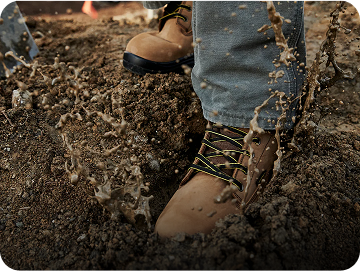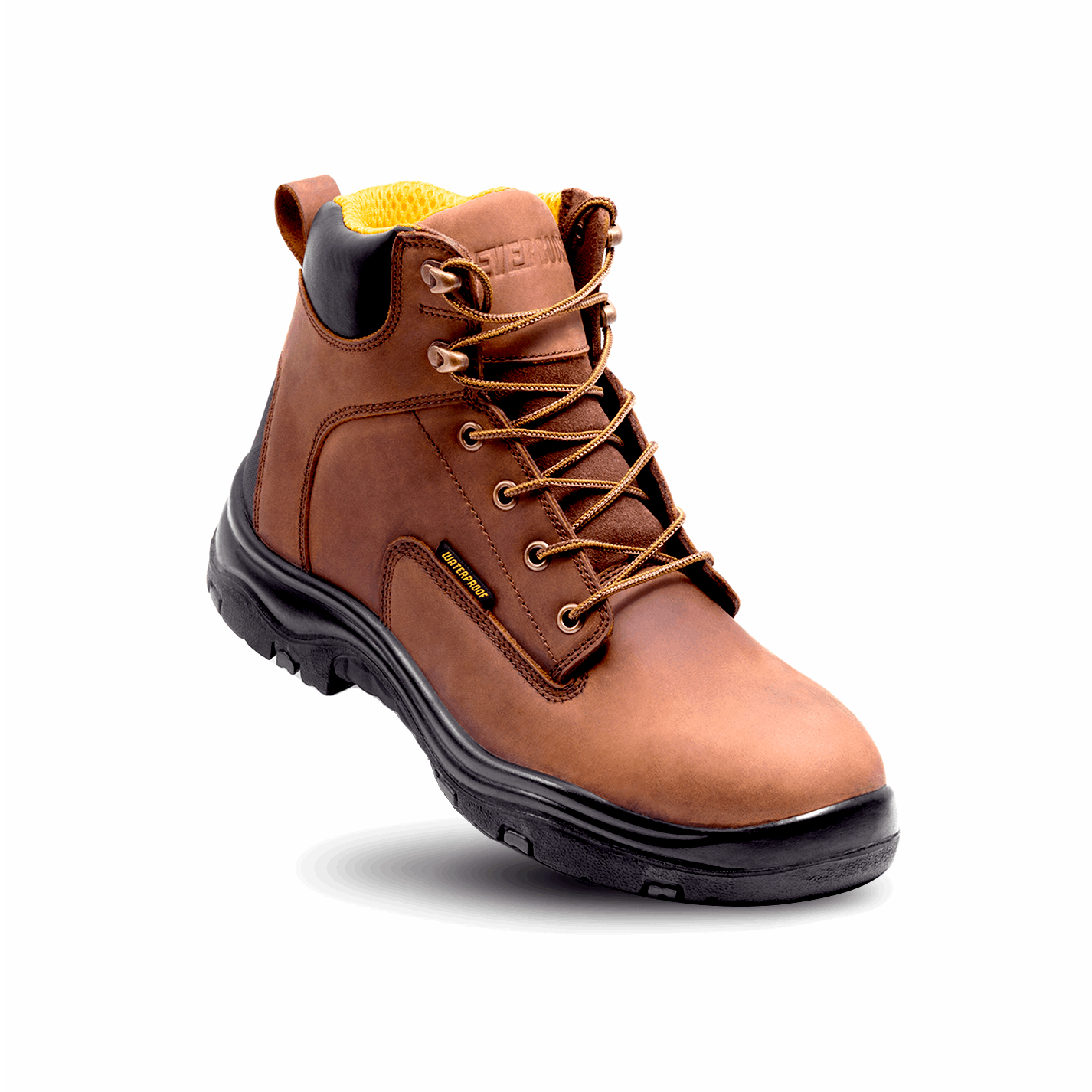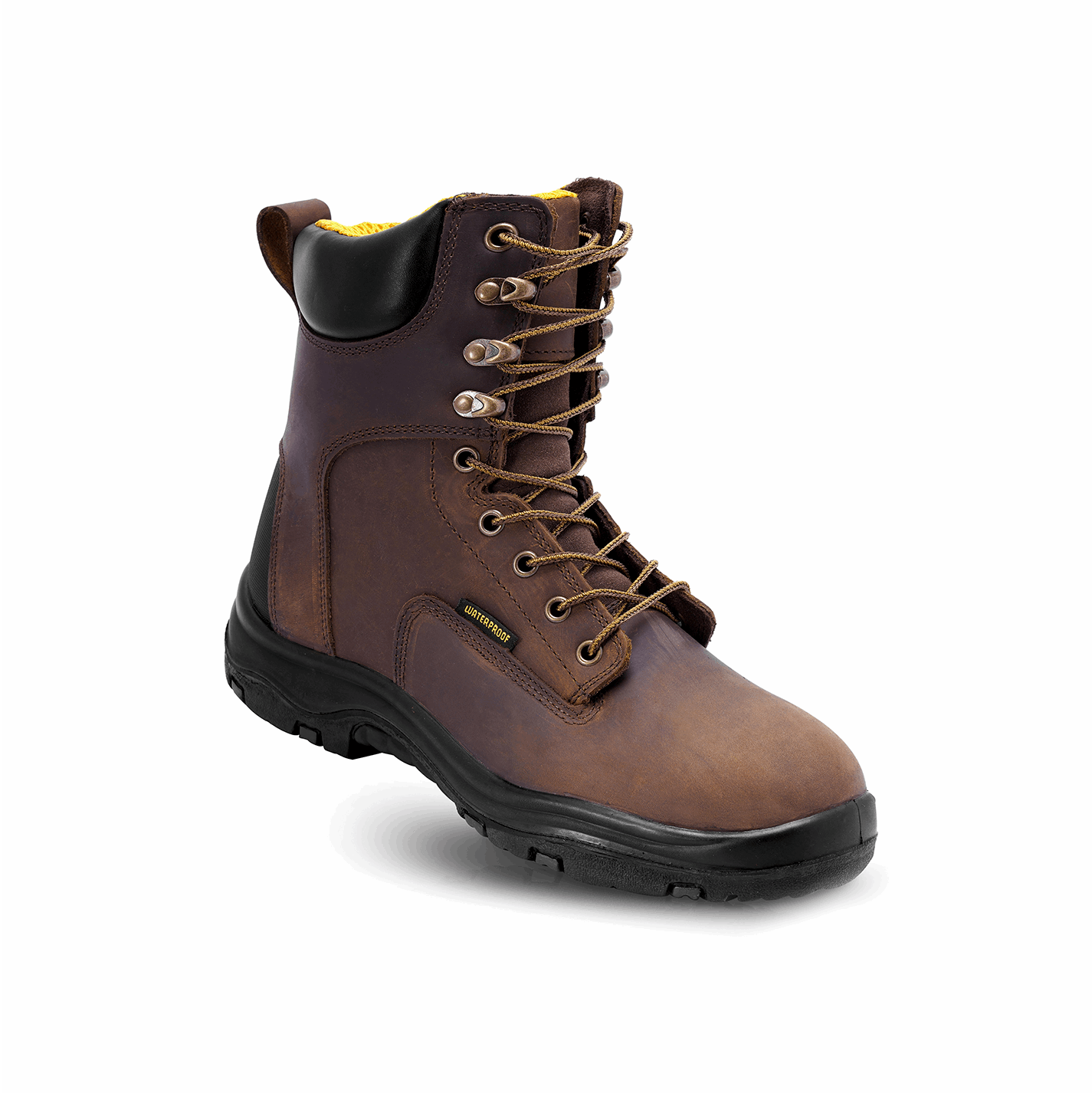You slip on your new boots, excited to get to work and back on your feet, only to find that these new boots aren’t as comfortable as you had hoped. And while some boots do feel comfortable right out of the box, it’s still going to take some time and some wear to get them attuned to your step. That’s why it’s important to take the time to break in a new pair of boots before wearing them out, especially if you’re going to be working in them.
Here’s how:
- Step 0: Make sure the boots actually fit you. No amount of breaking them in will fix an ill fitting boot. When shopping for a new pair, take note of their sizing guides to make sure you pick the right ones.
- Step 1: Wear them around the house with the same kind of socks and insoles you’d be wearing to work. Depending on how hard your boots are, you might want to wear even thicker socks to protect from blisters. Tie them normally and make sure the tongue is in the right position. It’s best to start out in the morning while the temperature is lower and your feet are true to size (so to speak). Wear them for as long as you’re comfortable.
- Step 2: Usually in the afternoon, your feet might get sweaty and bigger just from being active. At this point, you’re going to want to take them off or switch into another pair of shoes. Otherwise you risk getting blisters from your new boots. Once they’re off your feet, you can continue breaking them in with your hands by bending, twisting, and wringing the leather, aka crushing it. It’s okay to be a bit rough with it, as long as you’re not causing obvious damage, your shoes should be able to take it.
- Step 3: Invest in shoe expanders or adjustable shoe trees. These are tools you can leave in your boots overnight to help stretch them to the size of your feet. They’re also helpful in maintaining your shoes’ shape and certain types of shoe trees, like ones made of cedar wood, can help reduce moisture and prevent odors.
- Repeat Steps 1 to 3 for at least a week before taking them out. It’s important to take this slow. You’re trying to replicate normal wear to get them accustomed to your feet. It won’t happen overnight. But if you’re patient, a well broken-in boot will be well worth it. You’ll be more comfortable in your boots for a longer amount of time.
If you absolutely cannot wait, and you need to wear your new boots out of the box, you’re going to want to take preventative measures to avoid overall discomfort.
Here are a few things you should and shouldn’t do to make it easier on yourself:
- DO wear extra socks! At least 2 pairs. You’re going to want that extra cushion and protection from the potentially stiff or rough parts of your boots. Opt for either wool or synthetic fibers to maximize support and minimize moisture.
- DO wear bandages! Protect the ball and heel of your foot. It’ll help with support and provide extra cushion.
- DO buy blister pads! You’re more likely to get blisters while your boots are still stiff. Use blister pads as a preventative and help yourself out in the long run.
- DO NOT walk extremely long distances in one go! You’re just going to hurt yourself.
- DO NOT soak your shoes in water! It doesn’t even make sense, you just damage the leather and most people go out of their way to keep the insoles DRY.
- DO NOT apply heat to them! With a hair dryer, furnace, open flame, etc… Just don’t do it! Again you’re damaging the leather with harsh, high temperatures.
The good thing is that wearing them normally will eventually break them in. You can even try our Steps 2 and Step 3 when you get home from work to speed up the process.
There you have it, take it slow if you can, or brace yourself if you can’t. Any which way, they’ll end up getting broken in. It’s a necessary step in getting the perfect pair of boots for you. And once they’re finally broken in correctly, you’ll have a pair of shoes to get you through the day comfortably for years to come.
Learn more about the styles and features of EVER BOOTS products here.










Leave a comment